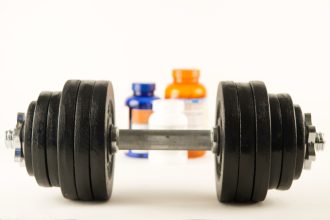Shoulder health is a crucial aspect of leading a pain-free and active lifestyle. The shoulder, being one of the most mobile joints in the body, plays a pivotal role in various movements and activities. However, its wide range of motion also makes it vulnerable to injuries and pain. Maintaining shoulder health is imperative not only for athletes or those engaged in physical labor but for everyone who seeks to perform daily tasks without discomfort. In this guide, we’ll explore practical tips and strategies to enhance shoulder strength, flexibility, and resilience, aiming for a life free from shoulder pain and restrictions.
Consult A Shoulder Specialist
Consulting a shoulder specialist is a vital step for anyone experiencing persistent shoulder pain, discomfort, or reduced mobility. These specialists, often orthopedic surgeons or sports medicine doctors, have the expertise to diagnose and treat a wide array of shoulder issues, from acute injuries like rotator cuff tears to chronic conditions such as arthritis. The brilliant Dr. Kevin Kruse says that a thorough examination might involve physical assessments, imaging tests like X-rays or MRI, and discussions about symptoms and medical history. Based on the diagnosis, they can recommend appropriate treatment options ranging from physical therapy to surgery.
Adopt an Active Lifestyle
Leading a sedentary lifestyle is one of the leading causes of poor shoulder health. Our bodies are meant to move, and regular physical activity promotes strength, flexibility, and cardiovascular health. It is essential to engage in a mix of aerobic exercises, strength training, and activities that enhance balance and coordination. However, it’s crucial to start slowly and gradually increase the intensity and duration of your workouts to avoid overexerting your shoulders or other body parts.
Common Causes of Shoulder Pain
Shoulder pain can stem from a variety of causes, each affecting the shoulder in different ways. One of the most common issues is rotator cuff tendinitis, a condition characterized by the inflammation of the tendons. Overuse or repetitive motions, especially those common in sports or certain occupations, can lead to this painful condition. Another prevalent cause is impingement syndrome, where the rotator cuff gets caught between the bones of the shoulder, leading to inflammation and pain.
Frozen shoulder, also known as adhesive capsulitis, is a condition that restricts motion and causes pain in the shoulder. It occurs when the capsule of connective tissue encasing the glenohumeral joint becomes thick and tight. Shoulder bursitis is another cause, involving inflammation of the bursa, a fluid-filled sac that reduces friction between tissues. This condition can significantly limit movement and cause swelling and pain in the shoulder area.
Injuries, such as dislocations or fractures, directly impact the shoulder’s anatomy and often result in immediate and severe pain. Arthritis is also a significant cause of shoulder pain, with osteoarthritis being the most common type affecting the shoulder, leading to the degeneration of the joint’s cartilage over time.
Strengthening Exercises
Incorporating shoulder strengthening exercises into your routine is a proactive measure to prevent injuries and maintain shoulder health. These exercises help in building the muscles around the shoulder joint, thereby providing better support and reducing the risk of injuries. One effective exercise is the shoulder press, which not only strengthens the shoulders but also engages the triceps and upper back.
Lateral raises work on the deltoid muscles, improving the shoulder’s stability and range of motion. Rotator cuff exercises, such as internal and external rotations with a resistance band, specifically target the muscles responsible for the shoulder’s rotational movements.
It’s essential to perform these exercises with proper form and technique to avoid strain or injury. Start with light weights or resistance levels and gradually increase as your strength improves. It is also recommended to consult with a fitness professional or a physical therapist to ensure that the exercises are suitable for your health condition and fitness level.
Injury Rehabilitation
Effective rehabilitation is paramount for those recovering from shoulder injuries or surgeries. The process focuses on restoring functionality, strength, and mobility to the shoulder joint, often beginning with gentle, controlled movements to mitigate stiffness without exacerbating the injury. Physical therapy plays a crucial role in injury rehabilitation, introducing exercises that gradually increase in intensity as healing progresses. Therapists may also employ techniques such as ultrasound therapy, electrical stimulation, and manual therapy to relieve pain and promote tissue healing.
Importantly, adherence to a personalized rehabilitation program, designed by healthcare professionals, is essential for a successful recovery. This program usually includes a combination of stretching exercises to improve flexibility, strengthening exercises to support the joint, and modalities to reduce inflammation. For those recovering from surgery, rehabilitation may also involve specific protocols to ensure proper healing of repaired structures.
Rehabilitation is a gradual process that requires patience, consistency, and close communication with healthcare providers. It’s important to set realistic goals and milestones with your therapist, as attempting to rush this process can lead to setbacks or further injury. By committing to a comprehensive rehabilitation plan, individuals can significantly enhance their chances of regaining full shoulder function and returning to their daily activities and sports without limitations.
Maintaining shoulder health is crucial for leading an active and pain-free life. By consulting a shoulder specialist, adopting an active lifestyle, and incorporating strengthening exercises into our routine, we can reduce the risk of injuries and improve the resilience of our shoulders. In case of injury or surgery, proper rehabilitation is essential to regain functionality and prevent future complications.












